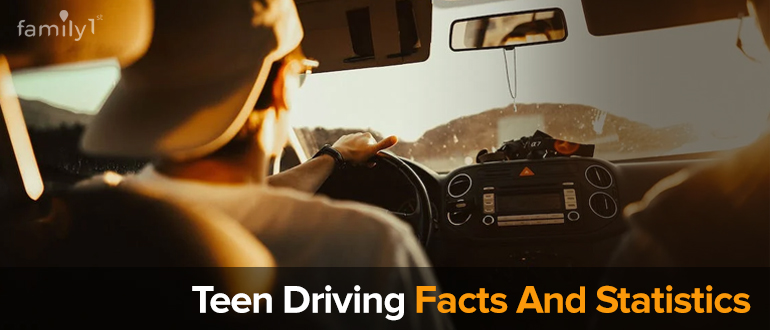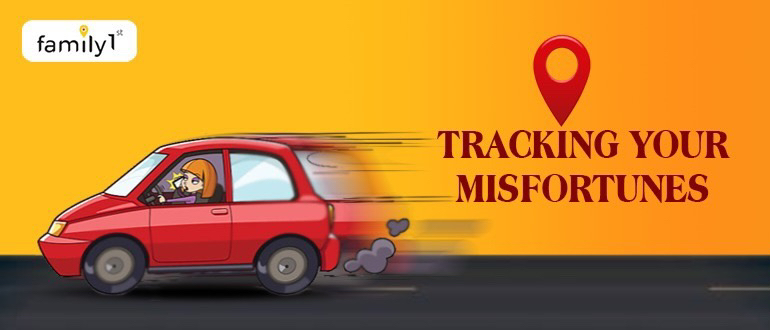Key Takeaways
- Teen drivers face the highest crash risk due to inexperience, distractions, and nighttime driving.
- Most teen driving deaths occur on weekends, at night, and peak in summer months like July and October.
- States with strict driving laws and parental monitoring see fewer teen crash fatalities.
- Using GPS trackers for teens helps parents monitor driving behavior and reduce risky actions.
Table of Contents
Why Teen Driving Demands Immediate Attention
Teen drivers make up just 3.7% of all licensed drivers but are involved in 7% of fatal crashes. This means they’re more likely to be in deadly accidents than any other age group.
In 2022, over 2,800 teens died in crashes, and early 2024 estimates suggest a slight drop to around 2,700 deaths. Car crashes are still the second leading cause of death for teenagers in the U.S.
Facts and Statistics About Teen Driving
High Crash Rates Among Teen Drivers
Teen drivers have the highest crash risk of any age group. Per mile traveled, they have the highest involvement rates in crashes, from those involving property damage only to those that are fatal. (Source: NHTSA)
Leading Causes of Teen Crashes
Common factors contributing to teen driver crashes include:
- Inexperience: Limited driving experience can lead to poor hazard recognition and decision-making.
- Risk-Taking Behavior: Teen drivers are more likely to engage in risky behaviors such as speeding and tailgating.
- Distractions: In 2022, 3,308 people were killed in motor vehicle crashes involving distracted drivers. Activities like using mobile devices or interacting with passengers can divert attention from the road. (Source: NHTSA)
Drunk Driving
In 2022, 30% of young drivers aged 15 to 20 who were killed in crashes had blood alcohol concentrations (BACs) of .01 g/dL or higher. This highlights the ongoing issue of underage drinking and driving. (Source: NHTSA)
Impact of Passenger Presence
The presence of peer passengers can increase the likelihood of risky driving behaviors among teens, thereby elevating crash risk.
Seat Belt Usage
Seat belts are the single most effective safety technology in the history of the automobile. A NHTSA study found that, between 1960 and 2012, seat belts saved more lives—329,715, to be exact—than all other vehicle technologies combined.
Effectiveness of Graduated Driver Licensing (GDL) Programs
Graduated Driver Licensing programs have been shown to reduce crash rates among teen drivers by introducing driving privileges in stages, allowing new drivers to gain experience under less risky conditions. (Source: NHTSA)
Parental Involvement
Active parental involvement, including setting driving rules and monitoring driving behavior, can significantly reduce risky driving behaviors among teens.
Understanding these facts and statistics is crucial for developing strategies to improve teen driver safety and reduce motor vehicle crashes involving young drivers.
5 Common Causes of Teenage Car Crashes
1. Inexperience
Teen drivers lack the skills to recognize and respond to hazards quickly. Most crashes happen within the first year of independent driving.
2. Speeding
Teens often drive too fast for road or weather conditions. Speeding is a factor in 35% of fatal teen crashes, increasing both crash risk and severity.
3. Driving at Night
Night driving increases crash rates due to low visibility and fatigue. 40% of teen crashes happen between 9 PM and 6 AM, especially on weekends.
4. Overconfidence
Teens overestimate their driving skills and underestimate danger. This mindset leads to unsafe lane changes, sharp turns, and reckless overtaking.
5. Using Mobile Phones While Driving
Mobile phone use diverts attention from the road and slows reaction time. Texting while driving increases crash risk by 23 times, and nearly 39% of teens admit to texting behind the wheel, making it a leading cause of distraction-related crashes.
Critical Driving Timings for Teenagers
Teen drivers aged 16 have the highest risk of crashes. They are 1.5 times more likely to crash than drivers who are 19 years old.
Teens aged 16–17 are three times more likely to be involved in fatal crashes compared to drivers aged 20 and above. Most teen accidents happen in the first 18 months of driving due to slower reactions and poor decision-making.
Vehicle Crash Deaths of Teenagers by Time of Day
| Time of Day | Number of Deaths | Percentage of Total |
| Midnight – 3 a.m. | 426 | 15% |
| 3 a.m. – 6 a.m. | 274 | 10% |
| 6 a.m. – 9 a.m. | 259 | 9% |
| 9 a.m. – Noon | 190 | 7% |
| Noon – 3 p.m. | 270 | 9% |
| 3 p.m. – 6 p.m. | 414 | 14% |
| 6 p.m. – 9 p.m. | 456 | 16% |
| 9 p.m. – Midnight | 553 | 20% |
Vehicle Crash Deaths of Teenagers by Week
| Day of the Week | Number of Deaths | Percentage of Total |
| Sunday | 554 | 19% |
| Monday | 341 | 12% |
| Tuesday | 332 | 11% |
| Wednesday | 336 | 12% |
| Thursday | 358 | 12% |
| Friday | 408 | 14% |
| Saturday | 554 | 19% |
Vehicle Crash Deaths of Teenagers by Month
| Month | Number of Deaths | Percentage of Total |
| January | 165 | 6% |
| February | 195 | 7% |
| March | 248 | 9% |
| April | 227 | 8% |
| May | 256 | 9% |
| June | 278 | 10% |
| July | 290 | 10% |
| August | 270 | 9% |
| September | 251 | 9% |
| October | 298 | 10% |
| November | 225 | 8% |
| December | 180 | 6% |
Source: Insurance Institute for Highway Safety (IIHS)
Teen-Related Crash Fatalities by State
Teen crash deaths are not the same in every state. Some states have more crashes because of higher teen populations, longer driving distances, and weaker safety laws.
Southern and rural states report the highest teen crash deaths. States like Texas, California, and Florida often lead in numbers due to large populations and more licensed teen drivers.
What Improves Teen Driver Safety
Graduated Licensing Enforcement
Graduated Driver Licensing (GDL) laws limit high-risk driving situations for new drivers. These laws lower crash rates by giving teens more time to gain experience under safe conditions.
Teen Driving Laws
State laws set curfews, passenger limits, and supervised driving hours for teens. These rules reduce crash rates and help teens build safe habits.
Also see: Teen Driving Laws in California
Parental Monitoring
Teens take fewer risks when parents set clear rules and track their behavior. Active involvement helps teens build safer habits early.
School Education and Simulation
Driving courses with hazard simulations teach teens how to react to real road dangers. Teens who complete these programs crash less often.
Night and Passenger Restrictions
Most teen crashes happen at night and with other teen passengers. Laws that restrict these factors cut crash risk significantly.
Zero-Tolerance for Distractions and Alcohol
Strong penalties for phone use and alcohol stop teens from taking dangerous chances. Enforcing these laws makes roads safer for everyone.
GPS Trackers for Teens
Parents use GPS trackers for teens to monitor driving behavior and location. These tools improve accountability and prevent risky driving.
Buy The Perfect GPS Tracker for Teen Drivers
Family1st Portable GPS Tracker helps parents track their teen’s driving in real time. It shows the exact location, speed, and driving routes through a simple mobile app.
This tracker is small, easy to hide in a car, and lasts up to 14 days on a full charge. Parents can set up geofence alerts to get notified when teens leave or enter specific areas.
With 4G LTE connectivity, the device offers fast and reliable updates, even in remote areas. It gives full driving history, helping families check for unsafe behavior like speeding or sudden stops.










Next
Previous